Euston will be the London terminus for HS2, confirms Chancellor Rachel Reeves. But the locals are fed up with the many years of disruption, and uncertainty remains about when and in what form the revamped Euston station will appear. Tom Edward reports.
“Today, we are securing delivery of the project between Old Oak Common and Birmingham, and we are committing the funding required to begin tunnelling work to London Euston station, catalysing private investment into the local area.”
Euston will be the London terminus for HS2, confirms Chancellor Rachel Reeves. But the locals are fed up with the many years of disruption, and uncertainty remains about when and in what form the revamped Euston station will appear. Tom Edward reports.
“Today, we are securing delivery of the project between Old Oak Common and Birmingham, and we are committing the funding required to begin tunnelling work to London Euston station, catalysing private investment into the local area.”
These were the words of Chancellor of the Exchequer Rachel Reeves, addressing MPs during her Budget speech on October 30.
On the surface, the high-speed rail link HS2 receiving the go-ahead to Euston should be seen as good news for the area.
The alternative was having the HS2 terminus in Old Oak Common in north-west London, where passengers would have to switch to services such as the Elizabeth line.
But the problem is: this community in Euston has been here before, and there is little or no faith left in the project.
Many think of HS2 as a scheme that has caused protests in the Chilterns and the countryside. But actually, it is the London Borough of Camden and Euston that has suffered most.
If you want an example of how not to do a construction, you should come to Euston and see HS2.
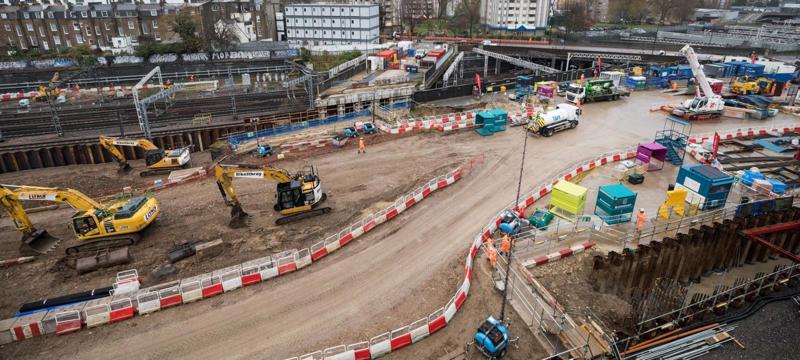
This is a project that has had a bewildering number of U-turns, timetable changes, and station designs. At the moment, it is still a brownfield site which has been mothballed for two years. It physically cuts the community in two.
Wander around the area, and you’ll see blue boardings everywhere and men in hi-viz on corners. And the blight has already been going on for years.
Seven years ago, 215 homes were demolished. Some 153 homes in the tower blocks next to the site were deemed uninhabitable, and residents were moved out. Seventy businesses also went. Those that stayed have been subject to traffic works, and noise and vibrations.
St James Gardens, a burial ground and open space was destroyed.
The Bree Louise pub was demolished. Craig Douglas lost that pub - and his home. Nearly seven years on and he still hasn’t had compensation. He is stuck in the legal process.
He told BBC London: “With what they have offered us now, if they’d offered us that five years ago, we’d have bitten their hands off. But after all this time it has been soul-destroying.”
Douglas has moved out of London to an area where it is cheaper to rent. The fight for compensation has come at a cost.
“My health, my mental state. My wife’s the same - stress, anxiety, depression. I’ve had a month in rehab for alcoholism. It has been very painful.”
HS2 Ltd says it believes it made Douglas a fair compensation offer and is trying to come to an agreement.
So, where now for HS2 Euston?
During the Budget, the Chancellor confirmed that the tunnelling from Old Oak Common to Euston would be funded. It implies that private investment will pay for the development around Euston, although there isn’t any detail on what a new HS2 station at Euston will look like.
The tunnel between Old Oak Common and Euston will be 7.2km (4.5 miles) long, and at its deepest point will run 50 metres below ground. It will be bored using two tunnel boring machines (TBMs) launched from the eastern section of HS2’s Old Oak Common station. The two TBMs are in place.
Already, the Atlas Road Logistics Tunnel, which will be used to deliver materials and remove spoil for the Euston Tunnel, has been completed.
Locals, however, were disappointed about the lack of detail in the budget announcement.
Oli Uddin is chair of the local Drummond Street Traders Association, which is right next to the development. He watched the announcement in his optometrist’s shop.
“It’s welcome news for the tunnelling. However, it’s very disappointing that there’s no clarity on what’s happening in the near future, in the whole area. Also, we don’t know when it’s going to end, when this area will be nice and new again like it used to be.”
“There is no end date. That is crucial for us traders, so we know where we are and where we are going to be in the future.”
“It is very disappointing if it’s going to finish after 2040. It’s unreasonable compared to what the original proposal was. That is not good for the traders, and we do need faster process. 100% we need it speeded up.
“The uncertainty, the struggling of the businesses, has not stopped. We are still in limbo. I would love the area to be sorted out as soon as possible, so businesses and the thousands of people who live here have clarity.”
The promise was for a brand new station, and thousands of homes and jobs as well as redevelopment of the area. Certainly, the housing seems to be the focus at the moment.
The government will form a Euston Housing Delivery Group, made up of people with experience in urban design, affordable housing delivery, and project finance.
It says its core focus will be “to unlock more investment in Euston and drive economic growth across the capital”.
In charge will be Bek Seeley, a leading regeneration expert previously at the developer Lendlease.
Housing and Planning Minister Matthew Pennycook said: “The appointment of Bek Seeley as the Chair of the Euston Housing Delivery Group is an important milestone on the journey towards regenerating this historic London neighbourhood and supporting economic growth across the country.
“The government will continue to work with the London Borough of Camden, the Mayor of London, and local partners and communities to accelerate the delivery of significant numbers of new homes and an expanded Knowledge Quarter alongside a much-improved Euston station.”
Lendlease is the government’s Master Development Partner for Euston. The company is responsible for developing a masterplan for the area above and around the stations.
Group Executive at Lendlease is Andrea Ruckstuhl, who is upbeat: “Following today’s announcement and as master developer, we plan to bring forward new buildings and public spaces at Euston through a planning application and partnerships with investors.
“The redevelopment of Euston is a once-in-a-generation opportunity to deliver improvements for the local community that will include new homes, businesses and community spaces, while also generating significant value for the UK economy.”
And the benefits could be considerable. A recent report from Camden Council, called the Euston Area Regeneration Economic Impact Assessment, said the development could feature up to 2,500 new homes, including 1,200 affordable homes.
There would be about 470,000 square metres of new high-quality commercial space, and new public spaces including parks and walking and cycling routes.
That would generate £4.2 billion of private and public investment, including at least £2.7bn of foreign direct investment - adding £540 million to the UK economy by 2030, rising to £2.5bn each year and a total of £41bn by 2053.
City Hall has welcomed the news that the tunnelling will be paid for.
Deputy Mayor of London for Planning and Regeneration Jules Pipe says: “I am looking forward to working with Bek and the Euston Housing Delivery Group to ensure that we maximise Euston’s contribution to housing, alongside delivering a world-class transport hub and supporting the development and growth of the Knowledge Quarter.
“The Mayor is committed to doing all he can to accelerate the pace of housing delivery in London. The unlocking of major sites such as Euston, which has been on hold for far too long, has a vital part to play in delivering the growth we need.”
Richard Olszewski is the leader of Camden Council. Initially it opposed the project, but now is working to optimise benefits for the community.
“Today we have learned that the HS2 line is going to come to Euston. That is welcome news in itself, as it helps to clarify the uncertainty that surrounds this whole area.
“The people who live around here have suffered 14 years of blight, disruption, loss of homes, loss of business income, and a huge dislocation to their social and economic lives, so it’s good news in the sense we now know it’s going to happen. We’re keen to learn more details so we can bring the much-awaited benefits to the people of Camden and wider London.
“What we want to see are jobs, and we want Camden residents and particularly people living near the station to have a fair share of the opportunities that will come there.
“We also want housing. Our estimate is that the development could provide as many of two and a half thousand homes, with 1,200 of them being genuinely affordable, so we are very keen to bring those benefits.
“We are also very keen to see the restoration and increase of green spaces, and also support for a broader scheme of community facilities.
“At Euston, we also have a once-in-a-generation opportunity to achieve this alongside a rapid expansion of London’s Knowledge Quarter, transforming it into a tech and science powerhouse that generates investment and opportunity for the entire country.
“We look forward to working in partnership with the Housing Delivery Group, government, and our residents to turn this opportunity into a reality.”
It isn’t clear yet what the station design will entail or how many new platforms there will be.
Experts say it isn’t straightforward. It could feasibly be back to the drawing board, with previous designs scrapped.
Sir John Armitt chairs the National Infrastructure Commission. He told the Railway Industry Association’s annual conference in central London: “What was very welcome news was the announcement that they would fund the completion of the tunnels through to Euston.
“That’s the relatively straightforward bit. The real challenge, as everyone in this room knows of course, is Euston station, which will take longer to do than it will to drive the tunnels.
“What’s really needed is to find a solution to dealing with Euston station.”
The last design had six platforms. But that isn’t enough, say some experts, who believe there is an opportunity to build for any potential future expansion of the scheme.
Independent rail consultant William Barter tells RailReview that expansion of HS2 services should be guaranteed: “The announcement about the tunnels is welcome. The open question is what form the eventual Euston station will take.
“The six platforms will be fine for the Phase 1 at ten trains per hour. But if that’s where it stops, then the HS2 core route will be forever condemned to operate at only about half its capacity.
“That is simply not rational, so in my view it is vital to design in scope to expand the HS2 station as and when the need arises - for enhancing the Glasgow service to half hourly, for an Eastern leg, whatever.
“That works because with Phase 1 trains shift out of the existing station onto HS2, freeing space for more HS2 platforms. That always was the Hybrid Bill concept - two stages, with minimum cost up front but potential to expand. That potential must not be designed out.”
Not everyone agrees. On the morning of the Budget, a small group of anti-HS2 protestors gathered outside Euston station. They had a large white elephant.
Among them was civil engineer Lord Berkeley, who worked on the Channel Tunnel. He thinks the terminus should stay in north-west London: “I think it should be stopped at Old Oak Common. Turn Euston into a decent station for the passengers who want to come here.
It needs rebuilding anyway, but you don’t need all these extra platforms. Actually, getting to Old Oak Common will be perfectly easy to do via the Elizabeth line from central London.”
Sarah Green is from Friends of the Earth in the Colne Valley: “I think it should be stopped completely, scrapped and repurposed.”
There are also those who think that Euston should be the catalyst for expanding HS2 further to the North beyond Birmingham. Old Oak Common will still be a temporary terminus while Euston is finished, although no one is forecasting completion dates just yet. No one is even certain on the design.
Jim Steer is a director of the research group Greengauge 21, which wants to see a national high-speed rail network that is fully integrated with today’s rail system.
“It’s a bit of a relief to be honest,” he says.
“Most of us were mystified about the idea we could just pretend that HS2 could end at Old Oak Common. It’s halfway through construction, so you can’t build a railway and not provide its terminus - it’s that simple.”
“The problem is no one really knows what the long-term position is. You have to remember that HS2 was planned pretty much from the outset as a Y-shaped network, serving the west of the country and the east, and carrying 16 trains an hour in theory.
“You’d need a terminus capable of handling that if that was still the plan. Looking at things now, it doesn’t feel like that is still the plan and no one knows what the plan is, so there is uncertainty about how many trains you have to accommodate.”
“Six platforms? You could probably make the west side of the country work with HS2 with six, but it doesn’t leave much to spare.
“Having said that, the plan always was you could build a six-platform station, then revise the train service pattern to Euston. And then you could do a stage 2 scheme - in effect, move two or three more platforms to an HS2 terminus. But it’s quite complicated.”
Steer tells RailReview he believes the scheme needs to be built up to Crewe, and it should be integrated: “I think what everybody would agree is if we’re going to spend these tens of billions of pounds on HS2, which we are committed to still, then we need to make sure that it’s properly integrated with the national rail network.
“The idea that we are going to build a standalone, high-speed rail network has really gone. It’s a network that has to tie into the existing railway, to complete high-speed journeys for everywhere other than London-Birmingham.
“Just like at the southern end of the network, you can’t stop it at Old Oak Common and not have to live with egg on your face for the most monumentally stupid compromise to infrastructure that this country or Europe will have ever seen.”
“You have to complete it as far as Crewe. There’s a bit in the Midlands that has to be built.
“It’s a fairly small increment, but it bypasses a bottleneck in today’s railway network, so if you won’t build that bit, you’re constraining the value you get out of HS2.
“Beyond Crewe, we’d all accept costs have gone up. And the time it has taken is longer than people expected.
“In my view we will need to see HS2 work before we invest substantially more in this.”
On the day of the announcement, Rail Partners Chief Executive Andy Bagnall said: ‘‘Filling the capacity gap left by the cancellation of the northern section of HS2 is still essential if we are to encourage more people to travel by train, and to unlock freight capacity to reduce congestion by moving goods off the roads and onto the railway.’
A spokesperson for the High Speed Rail Group also backed more expansion of high speed rail: “Rail investment is far more than a short-term cost - it is a driver of national growth and regional connectivity.
“Today’s approval to complete HS2’s critical link from Old Oak Common to Euston marks a pivotal step forward. We hope that an era of fragmented, short-term decision-making has been ended, in favour of a move towards a cohesive vision for the future of UK rail.
“However, we cannot stop here. To fully realise the socio-economic benefits of this project, it is critical that Phase 1 is properly connected north of Birmingham to Crewe and beyond.
“Taking a long-term, integrated approach to rail delivery going forward will enable HS2 and the broader network to fuel the UK’s economy and enhance productivity for generations to come. For the first time in some years, this Budget sees that future get one step nearer rather than further away.”
HS2 is a project that has been buffeted by politics, but it seems it is now moving forward.
Political consensus has always been fragile with the scheme. The local MP is Prime Minister Sir Keir Starmer (Holborn and St Pancras) and he will know how little trust there is in the project locally, which will need addressing
This community has had years of blight, while the engineers and construction sectors have also had years of uncertainty.
At the moment, many are waiting for detail. And while there is optimism, there are still many unanswered questions. This feels like another beginning.
Tom Edwards is BBC transport correspondent for London and the South East.
Login to continue reading
Or register with RAIL to keep up-to-date with the latest news, insight and opinion.


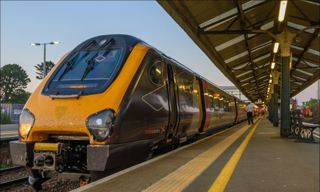
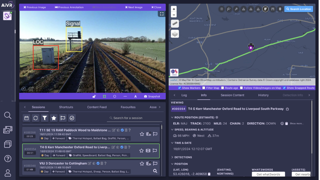
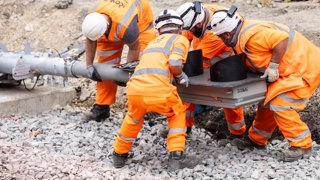
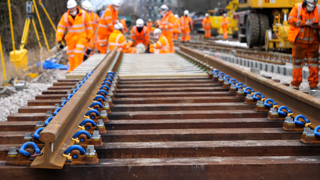










Login to comment
Comments
No comments have been made yet.